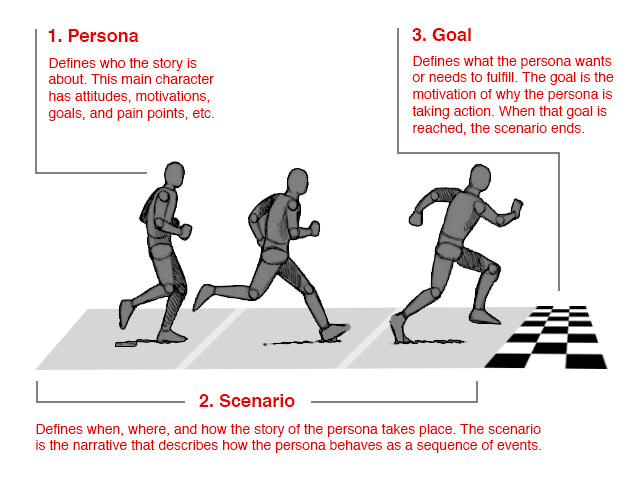Why Create a User Persona?
In an article by Patrick Faller relating to user research on XD Ideas the reasons for creating user personas are as follows.
Building empathy with the user
User personas help to build empathy for the end-user as they encourage designers to gain a perspective similar to the user. By thinking about the needs of a fictional person a designer can better infer what the needs of an actual user might be. This should be built apon the more the designer engages with a user persona as it should help them to identify with the user persona and begin to see them as a real person.
Direction for design decision making
An example of this might be that the user persona stipulates that the user uses the app on the go and therefore this should be taken into consideration when making design choices like button size. User personas also help to prevent common design pitfalls such as self-referential design (designers design as if they are making the product only for themselves) and designing for elastic users (generic users which means different things to different people).
Communicate research findings
This is a particularly helpful aspect of creating user personas when it comes to working in teams. User persona’s help multidisciplinary teams find themselves on the same page when it comes to design decisions as user personas should encapsulate the most critical information about the user.
Creating a User Persona
Before creating my user persona’s I carried out desk research on how to design for children looking specifically at the BBC guidelines. I also looked at the curriculum being covered in school for my target audiences age group and carried out two interviews. I gathered my primary insights from these different forms of research and used them to create 3 user persona’s one on Annie an 8-year-old girl in Primary 4 with dyslexia, one on Noah a high performing 10-year-old boy in Primary 6 and one on a parent with an interest in encouraging her children to learn more on stem subjects. I have created this range of personas in an attempt to meet a full spectrum of needs faced by any user. I also think it is important to consider parents when designing anything for children as the parent will have a certain amount of say on what products their children interact with at this stage.

In Annie’s about and bio section, I have included demographic and behavioural information about Annie. I have then looked at specific goals and frustrations relating to learning and game playing as these are the two primary functions I want to include in my own product. I have also considered the devices Annie uses and her individual UX needs.

Likewise, I have followed the same structure for Noah. However, Noah’s goals and frustrations are more focused on creating content that will challenge and engage the user without becoming too complicated, which research suggests will cause the user to disengage with the product.

Finally using the same structure I have outlined Jennifer, a parent in a persona, looking at the needs of a parent in relation to the product as this will impact a child’s access to a product ensuring that the goals and frustration points of parents such as children not engaging with educational apps and wanting to encourage her children to learn more in area’s of STEM.
Creating a User Scenarios
“User scenarios should define when, where and how the story of the person takes place” as presented in the below infographic.

I, therefore, decided to create a user scenario for each user persona. I have attempted to outline a scenario for each user.

Annies user scenario states some of her frustrations with current apps and games given the fact that she is dyslexic. The scenario also outlines some of the key features of games that Annie loves to play.

Noah’s user scenario outlines his current frustration of no longer learning about science in school, this was an issue highlighted by both my interview participants. It outlines that Noah loves to learn about facts and has an interest in cars and space and currently enjoys playing games where he can build things and collect resources.

Jennifer’s user scenario outlines the fact that she is a working mother and while she wants her children to engage in educational activities outside of school she does not have the time to lead these activities. It outlines the fact that Jennifer is aware that her children engage best with games and is actively seeking games that will educate her children in STEM subjects.